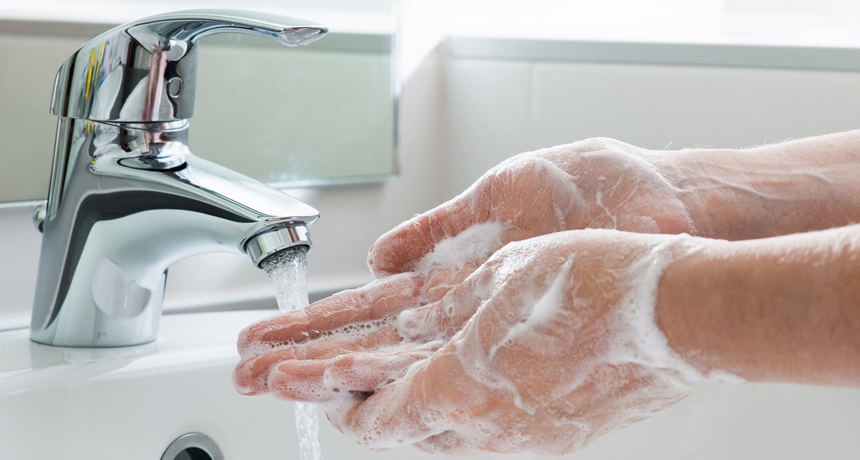U.S. to outlaw antibacterial soaps
They’re no better than regular soaps, despite ads and promises that they were

Antibacterial soaps are on the way out. They aren’t needed and could even do more harm than good, FDA concludes.
AlexRaths/ iStockphoto
By Helen Thompson and Janet Raloff
Antibacterial soaps will not remain on U.S. grocery store shelves for much longer. The U.S. Food and Drug Administration, or FDA, has just approved a new measure that will ban 19 ingredients in soaps. The ban will go into effect in one year. All of the banned substances had been promoted as germ killers.
What made FDA take this move? The term “antibacterial” suggests that such soaps can halt the spread of germs. In fact, “we have no scientific evidence that they are any better than plain soap and water,” says Janet Woodcock. She directs FDA’s Center for Drug Evaluation and Research. It’s in Silver Spring, Md. Three years ago, FDA asked soap makers to submit data on the safety and efficacy of such products. But they could not prove that these chemicals made their products better than regular soap at getting rid of germs.
Worse, some data suggest these germ killers “may do more harm than good over the long-term,” Woodcock adds.
Why? In the Federal Register document outlining the new ban, FDA described this issue. Antiseptic chemicals do kill germs. But low levels of these chemicals are not very effective. Any germ that isn’t killed may even evolve a resistance to these chemicals — especially when exposed to dilute amounts. And when these chemicals wash down a sink’s drain and into the environment, they will be diluted. Once a microbe develops genes to resist the “germ killer,” it can share those genes with other germs. Eventually, a great many germs may become resistant to — unaffected by — these chemicals.
The soon-to-be outlawed chemicals include triclosan (TRY-klo-san) and triclocarban. They are the two most widely used non-prescription antiseptics. Each year, U.S. soap manufacturers use an estimated 363,614 kilograms (799,426 pounds) of triclosan and 640,000 kilograms of triclocarban for their products, FDA said.
Concerns over triclosan
Of the two chemicals, triclosan is best known. That’s largely because of studies pointing to the risks it may pose.
A report on triclosan in Science News, 15 months ago, noted that: “In people, the chemical shows up in blood, urine, breast milk, umbilical cords and snot. The health risks of prenatal doses of triclosan are unknown. In the nose, however, researchers found that triclosan-laced snot helps Staphylococcus aureus bacteria invade the body. Such invasions increased the risk of staph infections, which can cause pneumonia.” Pneumonia is a potentially life-threatening lung disease.
The triclosan that washes down the drain when people wash their hands flows to city water-treatment plants. There the pollutant can affect the bacteria relied upon to break down sewage. Studies have suggested that the chemical can kill off some of these good microbes. And it can make others resistant to the antiseptic.
The European Union has reported finding concentrations of triclosan in a number of regions that suggest “bacterial resistance could occur,” the FDA said. There’s no proof that triclosan resistance is a public health risk yet. But FDA cited studies indicating that resistance to this chemical is building.
That’s why, to play it safe, FDA noted that it could not characterize this chemical — or the others affected by the new ban — as “generally recognized as safe.”
The new FDA ban does not include hand sanitizers. FDA is studying them separately. In the meantime, the agency recommends using hand sanitizers that are at least 60 percent alcohol. Or people can just wash with old-school soap and water.
Oh, and another federal agency — the Centers for Disease Control and Prevention — also has instructions on how best to wash your hands. Indeed, CDC argues that good hand washing is basically a “do-it-yourself vaccine” against infections.







